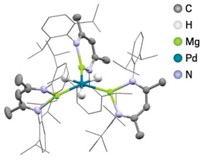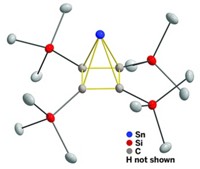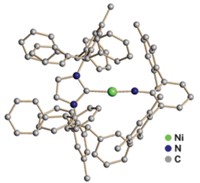Advertisement
Grab your lab coat. Let's get started
Welcome!
Welcome!
Create an account below to get 6 C&EN articles per month, receive newsletters and more - all free.
It seems this is your first time logging in online. Please enter the following information to continue.
As an ACS member you automatically get access to this site. All we need is few more details to create your reading experience.
Not you? Sign in with a different account.
Not you? Sign in with a different account.
ERROR 1
ERROR 1
ERROR 2
ERROR 2
ERROR 2
ERROR 2
ERROR 2
Password and Confirm password must match.
If you have an ACS member number, please enter it here so we can link this account to your membership. (optional)
ERROR 2
ACS values your privacy. By submitting your information, you are gaining access to C&EN and subscribing to our weekly newsletter. We use the information you provide to make your reading experience better, and we will never sell your data to third party members.
Materials
A Chain Of Six Indium Atoms
Group 13 element shows surprising ability to form a linear oligomer
by Mitch Jacoby
April 3, 2006
| A version of this story appeared in
Volume 84, Issue 14

A compound composed of six indium atoms arranged in a linear chain has been synthesized by researchers in England (Science 2006, 311, 1904). The study broadens understanding of main-group metal chemistry and may lead to novel strategies for preparing inorganic oligomers and polymers.
Unlike carbon and other group 14 elements, which readily form molecular chains of various lengths, elements in group 13 (B, Al, Ga, In, and Tl) are far less likely to bond to one another in a linear fashion, particularly in chains of three or more atoms. But now researchers have shown that under the right circumstances, indium can form linear oligomers.
By reacting indium iodide with a protonated N-xylyl β-diketiminate and a strong potassium base, the scientists formed a hexaindium chain in which one β-diketiminate ligand is bound to each metal atom. On the basis of crystallography studies, the team reports that both ends of the chain are capped with iodine and that there are no bridging ligands supporting the five indium-indium single bonds.
The research team includes Michael S. Hill and Ruti Pongtavornpinyo of Imperial College London and Peter B. Hitchcock at the University of Sussex.
"We certainly weren't expecting the open-chain complex to form in the way it did," says Hill, who led the study. He adds that, considering earlier work that he and his colleagues conducted on indium compounds and isoelectronic polystannanes, "I was hoping for a well-defined cyclic oligomer." Just the same, Hill points out that the surprising results are "completely reproducible."
He hopes that the paper "will add another color to the palette of chemistry and prompt researchers to examine the potential of inorganic polymers more broadly."





Join the conversation
Contact the reporter
Submit a Letter to the Editor for publication
Engage with us on Twitter